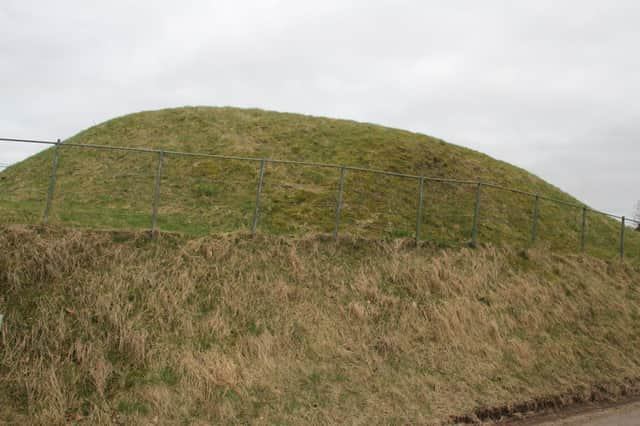Wolfclyde motte: a strategic history


Lanark County Council was putting a road alongside the Clyde at this point in the 1930s with scant regard for the motte. They shaved a bit off and, in doing so, fell foul of the Department of Works. It brought down the wrath of the Ancient Monuments officials who promptly ordered Lanarkshire Council to restore Wolfclyde motte to its former glory.
The early earth and wood castles followed the typical motte and bailey design; unfortunately many were badly damaged over the passage of time like Biggar’s motte which survives but its bailey became the town’s first bowling green.
Advertisement
Hide AdAdvertisement
Hide AdThe only decent example left is the Motte and Bailey which lies opposite Abington Service station. This was excavated by the Coalbrookes of Abington at the end of the 19th century but all that was found was a burnt layer. Probably it got set on fire at some point during the Wars of Independence.
Some mottes have no bailey and are built in strategic locations, not in villages or small towns. Wolfclyde Motte was of this type. It was constructed to protect a ford across the Clyde. It probably dates to the late 13th century.
It was likely built during the first Wars of Independence from 1296 to 1314. After the battle of Dunbar in 1296, many of the Scottish nobility signed the Ragman’s Roll which acknowledged Edward I as the supreme authority in Scotland.
The majority of the Clydesdale landowners signed this document, including the Lindsays of Wolfclyde. It would not be beyond the realms of possibility that Edward I got the local landowners to build these mottes as signal stations.
Advertisement
Hide AdAdvertisement
Hide AdIt seems that there is a chain stretching from Abington to others being constructed near Roberton, above Lamington, Wolfclyde and on a site overlooking Covington. Edward’s aim was to have them in strategic positions to give the English garrisons effective control of the Clyde Valley.
Certainly this paid dividends as William Wallace only held on to Lanark Castle for a short time in 1297 – Edward I had regained control by 1298.